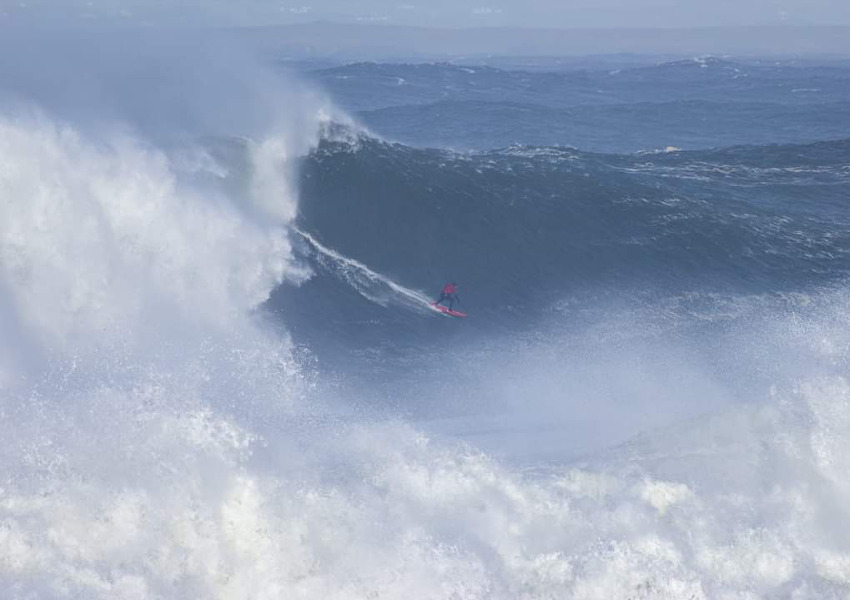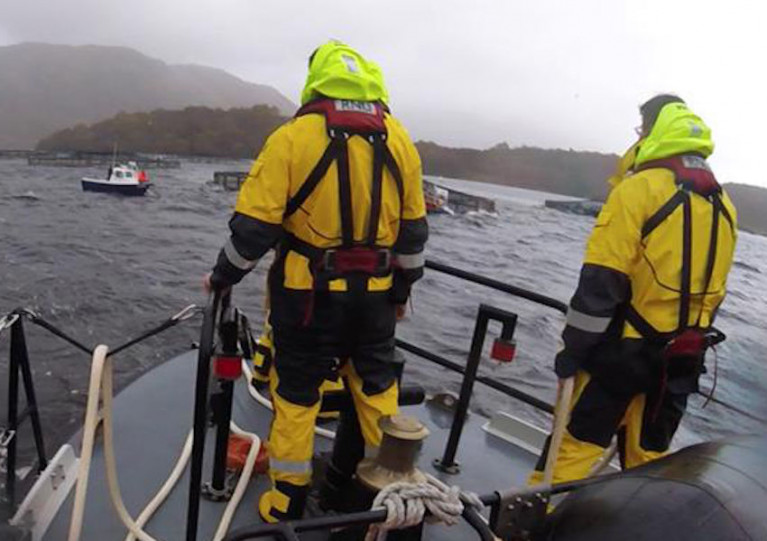Displaying items by tag: Storm Aiden
Oban Lifeboat Assists Fishing Vessel in Storm Aiden
As Storm Aiden brought its gale-force winds and driving rain from Ireland to western Scotland, Oban RNLI launched to assist a fishing vessel in distress in Loch Etive.
The 22ft fishing boat, with four on board, had broken down west of Airds Point and managed to secure to a fish farm mooring while they awaited assistance yesterday afternoon, Saturday 31 October.
Meanwhile, the lifeboat launched amid heavy seas and 60mph gusts and reached the scene within half an hour to set up a tow to Taynulit pier, from where the fishermen had set out earlier in the day.
On arrival, however, the pier was submerged by the extremely high tide, and with no other shelter in the area it was decided to secure the fishing vessel to a mooring in Airds Bay and bring its crew ashore at Dunstaffnage with the lifeboat.
Oban RNLI coxswain Ally Cerexhe said: “Although the lochs may appear to provide some shelter, the strong winds and high tides still pose the same risk.”
Storm Aiden Prompts Status Orange Warning for Southern and Western Counties & All Coastal Waters
A Status Orange weather warning is in place for all Irish coastal waters and the Irish Sea as strong gales are set to develop overnight with the arrival of Storm Aiden, the first of the new storm season.
Met Éireann reports that winds will reach storm force off the South and South West Coasts in the early hours of tomorrow, Saturday 31 October, later veering westerly during the day and reaching gale to storm force on all coastal waters and the Irish Sea.
Tomorrow morning’s winds will reach mean speeds of 65 to 80km/h, with severe and damaging gusts of 100 to 130km/h, affecting Cork, Kerry, Waterford and Wexford as well as Carlow, Kilkenny and Wicklow.
#StormAiden has been named by Met Éireann for Halloween. Orange & yellow wind warnings are in effect for Sat. Potential for severe & damaging gusts.
— Met Éireann (@MetEireann) October 30, 2020
All current warnings here : https://t.co/ozrQHtGpc1
Satellite below shows the position of #StormAiden in the Atlantic pic.twitter.com/mblYdArK0B
Later in the day these severe winds will veer west over counties Clare, Galway, Mayo, Sligo and Donegal. The rest of Ireland is under Status Yellow with lesser but still potentially damaging gusts forecast, as well as a risk of coastal flooding.
 A surfer rides a large wave at Mullaghmore, Co Sligo on Wednesday | Noel Fitzpatrick/Met Éireann
A surfer rides a large wave at Mullaghmore, Co Sligo on Wednesday | Noel Fitzpatrick/Met Éireann
The storm follows the remnants of Hurricane Epsilon, which brought ‘phenomenal’ class seas to the West Coast on Tuesday and Wednesday — just the ticket for the big wave surfing enthusiasts of Mullaghmore Head.
Local surfers told RTÉ News that the swells of earlier this week were some of the biggest they’ve ever seen here, and Conor Maguire was among those up for the challenge.
Dramatic surf conditions in the Atlantic Ocean caused by Hurricane Epsilon have created waves of over 18m off the coast of Sligo. Elite surfer Conor Maguire, who caught the waves today, said it was a rare and special experience. pic.twitter.com/qcXsOqTUs8
— RTÉ News (@rtenews) October 28, 2020
























